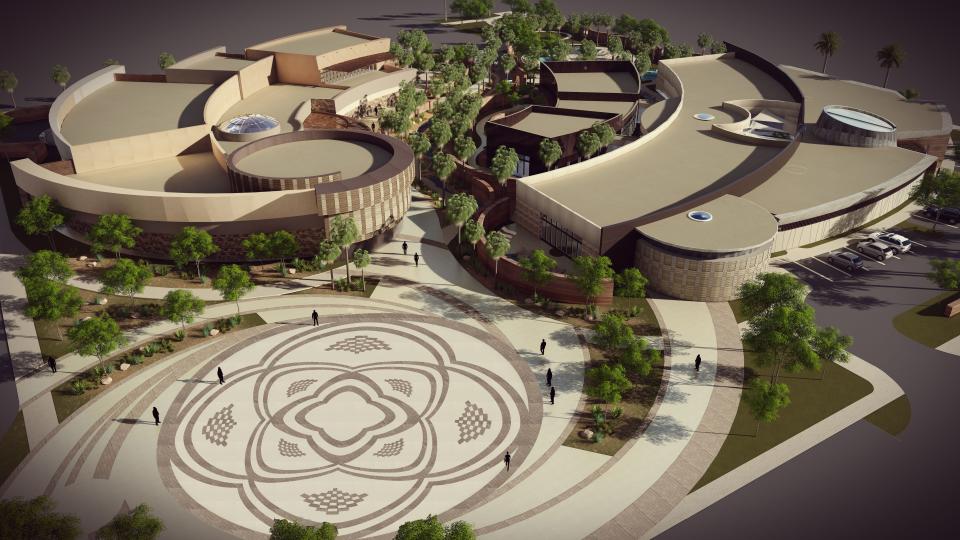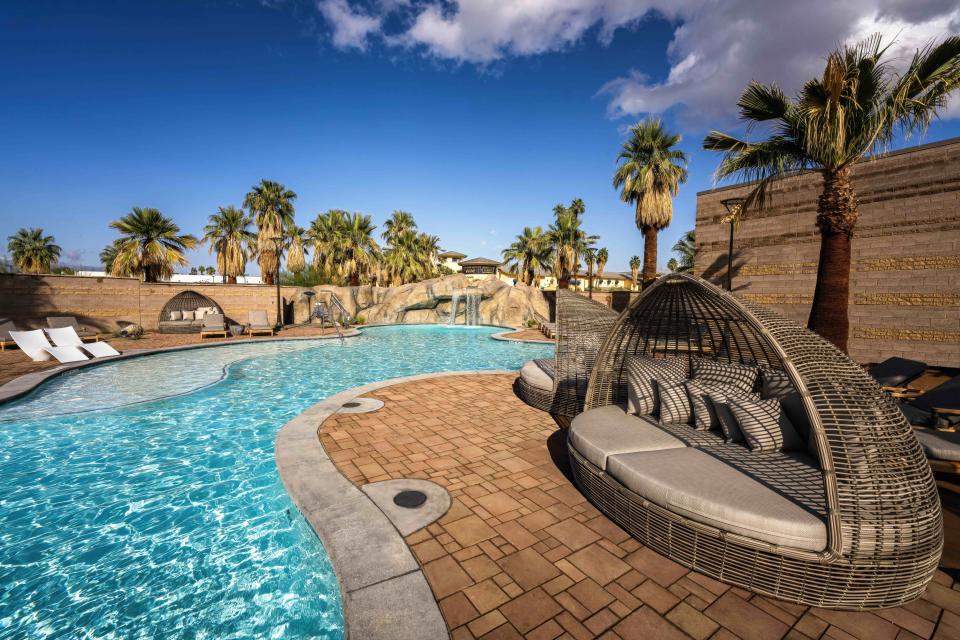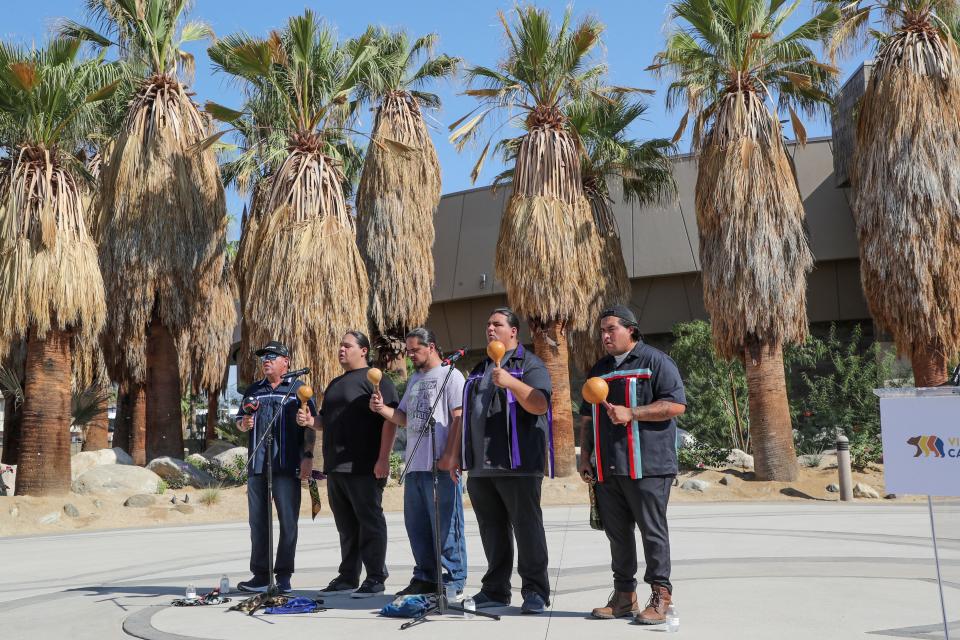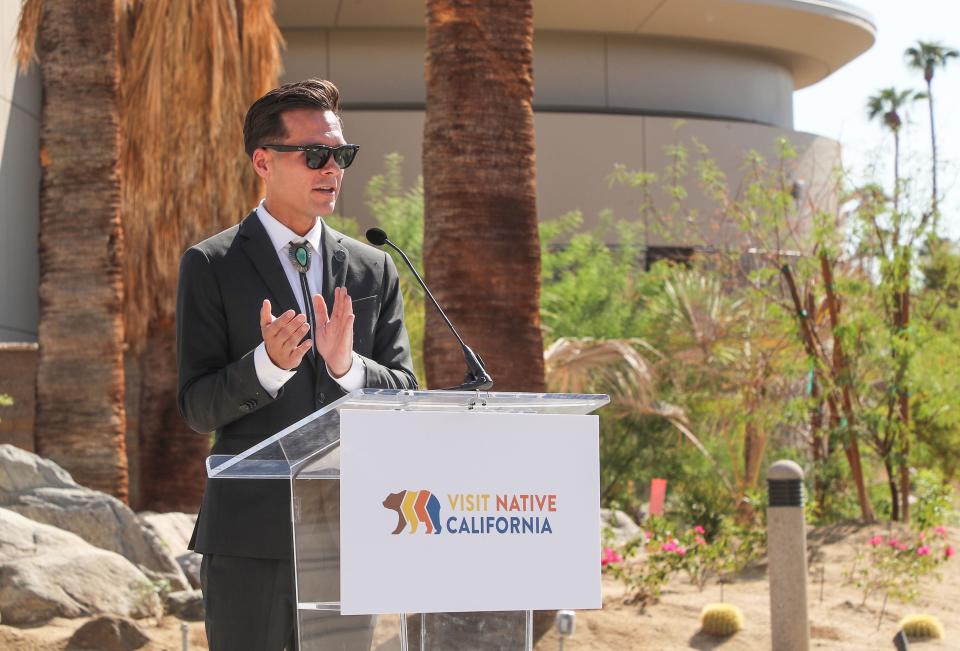Agua Caliente Palm Springs spa to debut in April; cultural museum to open 'later' in 2023

The Agua Caliente Band of Cahuilla Indians will open its 40,000-square-foot "The Spa at Séc-he" at the Agua Caliente Cultural Plaza in downtown Palm Springs on April 4. But the much-anticipated Agua Caliente Cultural Museum, on the same plot of land, will not open at the same time.
Billed as "one of the most luxurious hot mineral spring spa destinations in the country," the spa, the latest incarnation of both commercial and sacred bath houses on this spot, will be at the corner of North Indian Canyon Drive and East Tahquitz Canyon Way, across the street from the tribe’s Agua Caliente Casino Palm Springs. It will be fed by underground hot springs, or "séc-he," meaning "the sound of boiling water," used by the tribe and their ancestors for millennia, and which are closely linked to Palm Springs' tourism history.

“The opening of The Spa at Séc-he is a defining moment for the Tribe,” Chairman Reid D. Milanovich said in a news release. “The hot spring water means everything to us. It’s at the heart of tribal life and has been a cultural resource for us and our ancestors for thousands of years. It’s not a myth; these waters are truly healing waters.“
The facility has been under construction since 2018, and is the first of several attractions planned for the site since 2015.

The tribe said "after careful consideration," it would open the Agua Caliente Cultural Museum, Gathering Plaza and Oasis Trail "later this year," according to the release.
The water from the Agua Caliente hot springs is estimated to be 12,000 years old and contains a mineral make up that has not been found anywhere else in the world. The tribe has shared the healing water with visitors for more than 120 years, and the hot spring was the first tourist attraction in Palm Springs. The new spa will be the fifth bathhouse or spa at the site, with the first one opened in the late 1880s.
The Spa at Séc-he will feature 22 private mineral baths, 15 treatment rooms, a cryotherapy chamber, two float pod suites, a boutique fitness area, a "grounding" room, an acoustic wellness lounge, tranquility garden, menthol dry sauna, eucalyptus steam room, two therapy salt caves, a resort-style mineral pool with four Jacuzzis, luxury cabanas, a full-service salon with scalp treatment beds, a cafe and a poolside bar with food service. Information on how to book services will be available soon. A hiring fair was recently held for the spa facility.
Kate Anderson, spokeswoman for the tribe, said that the piping hot water will be channeled from a cavern a mile and a half deep underground to the cultural center's spa. The waters, unlike others in the area that flow from earthquake faults or are pumped in from the Colorado River, likely come from ancient spring snow and rains that were naturally filtered underground before bubbling back to the surface, according to U.S. Geological Survey researchers.
The water gushing out of the spring has been underground for approximately 12,000 years, according to a 2011 study by the federal agency. Based on that estimate, the water now coming out of the spring likely fell as rain or snow around the time when the last ice age was ending.The USGS has been collecting data on the spring since the early 1900s, and during the past century, its flow has varied from 5 gallons per minute to 60 gallons per minute.Researchers said in 2014 that they think the water, after slowly sinking through fractures in the rock beneath the San Jacinto Mountains, is heated up in a geothermal reservoir about a mile underground along the Palm Canyon Fault.
Both Palm Springs' and the tribe's identities and history are intertwined with the flows. The city took its name from the springs and the adjacent native palm trees, and "agua caliente," a Spanish phrase that was imposed on the area, means "hot water."
The springs were leased to non-tribal developers and returned to the tribe in the late 19th and 20th centuries, with several popular bathhouses constructed there. The last, razed in 2014, was frequented by Hollywood stars, including Elvis Presley.
The healing waters are also closely linked to tribal legends and practices. The Kauisik clan that inhabited the area long before European settlers used the hot mineral spring for irrigation, drinking water, warm baths and healing.
A Cahuilla legend retold by tribal elder Francisco Patencio in the mid-1900s describes the creation of the hot springs:
"The head man, Tu-to-meet, was tired and sick and lame, so he took his whó-ya-no-hut [staff of power], which he struck in the ground. He twisted it around, and caused the water of a spring to come out .… He named it Sec he, meaning the sound of boiling water, which is up to the earth and on the earth, which is never to dry up, never to go away, but to be there forever and always for the sick."

Design inspiration for the Spa and Cultural Plaza is rooted in Agua Caliente traditions such as basket weaving, pottery (ollas) and botanical elements native to the tribe's reservation.
"This is about breaking the stereotypes and the misconceptions people have on Native American People," said then-Agua Caliente Chairman Jeff Grubbe at the 2018 groundbreaking for the museum. "We didn't all ride on horses and live in teepees ... We all have our distinctive differences, and we want to share that and show that to people."
Construction on the museum, originally slated to finish in 2020, was delayed by the COVID pandemic, said Anderson. In addition, she said, the location is the site of a large Indigenous archeological artifact recovery project. Shortly after construction began, the Tribe paused construction for several months while thousands of artifacts dating back more than 8,000-plus years were recovered.
Janet Wilson is a staff reporter for The Desert Sun. She can be reached at jwilson@gannett.com
This article originally appeared on Palm Springs Desert Sun: Agua Caliente spa in Palm Springs to open Apr. 4, museum to open later

 Yahoo Autos
Yahoo Autos 